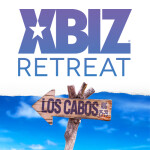As you read this, I’m hoping it’s while you’re having a well-earned rest having survived Black Friday and before the rush of kinky Christmas customers coming (I do love my alliteration!) through your doors.
Take a moment to think about what’s normally the busiest time of the year in the adult retailing calendar. Think of all those customers walking through your boutique or store doors. Think of the value to your business in getting a real insight into their heads — and their wallets — regarding their discretionary spending habits on erotic products, and where you fit into this.
You’ve got as much right asking your customers for their thoughts as the other companies they deal with. And I urge you now to do your level best to ensure they take the time to answer your questions as a priority.
So, before you hand over to your customer the bag containing their purchases, how about you pop something else in it? Namely, a well-designed customer survey.
Earlier in the year I wrote about the importance — and real value — attached to measuring your company’s share of your customers' wallets. A well-designed customer survey will certainly help you calculate this, as well as a whole host of key metrics of importance to not only your marketing team but the company as a whole.
Obviously, I thoroughly approve of well-designed, structured customer surveys that can deliver real insight to companies. But while the advent of online survey applications such as Survey Monkey have really made customer research more accessible — and cost effective — to the masses (which in itself is fantastic), the danger to individual companies is that customers aren’t only being asked to provide feedback on the service they’ve received from you, but dozens of others too.
That restaurant you ate at a few days ago? The server probably asked you to fill in a survey in which the web link is provided at the bottom of your receipt. And that recent hotel stay? There was probably a card on the table inviting you to offer your thoughts on your time there. And your latest Amazon purchase? Yep, you probably got the follow-up email asking you to rate that too.
But remember: You’ve got as much right asking your customers for their thoughts as the other companies they deal with. And I urge you now to do your level best to ensure they take the time to answer your questions as a priority.
I’m a regular advocate of zagging when the majority are zigging. And when it comes to getting customer feedback, I’d recommend a similar alternative course of action, especially if you’re running a store targeting more discerning, upmarket consumers. So, while everyone else is printing out survey links on receipts, I say to you: head in the opposite direction. Ask your customers to complete a nicely designed and printed paper questionnaire instead.
And while due to space constraints I can’t offer you the full ins and outs of how to conceive, execute and manage a good customer research survey within the confines of this column, I can do a pretty good job of highlighting the key aspects to consider.
Do bear in mind that as space is at a premium on a paper self-completion questionnaire, it’s imperative that your research objectives and specific information needs are clearly established. What do you want to know from your customers? What insight do you seek that will help your business the most?
Even if you plan to manage most of the survey in-house, I’d strongly recommend at the very least you get a professional marketer with solid research experience to review the questions at the design stage. Dubious question phrasing, ambiguous, leading or loaded questions and iffy phrasing and response options will be highlighted and corrected in order to draw out the best possible data and subsequent insight.
For example, those inexperienced in questionnaire design may think nothing of simply asking a question like: “Do you own a dildo?” while offering only yes/no/prefer response options.
What you should be doing (and it won’t impact questionnaire layout too much) is offer several response options that allow respondents to answer the question while helping identify user segments. Change the question to: “How many dildos do you own?” and edit the response options accordingly (none, 1, 2, 3, 4, 5 or more, don’t know). The data can now be netted to identify ownership groupings, which may be very illuminating when cross-tabulating the rest of the data.
Obviously, if you’re serving an upmarket clientele, you need an upmarket look and feel to your printed questionnaires. It has to be professionally printed on good quality stock. The same goes for the accompanying covering letter explaining the reason for the survey and requesting its completion, along with highlighting the respondent’s anonymity and the requested return date. And yes, if your questionnaires and cover letters are printed on good paper stock, this has to be extended to the pre-stamped return addressed envelope too. There’s to be no cutting corners here!
Talking of envelopes, there’s another thing I’d recommend to be added to the envelope. But this time, it’s to the exterior. And you’ve probably got a pile of them in your office already. Yes, the humble canary yellow Post-It note. Research in the past has strongly indicated that adding a brief personal note can notably increase response rates. Why not get whichever sales associate has been serving the customer to pen a neatly written polite message urging the customer to take part. Stick the note over the address on the envelope. For only a little extra effort, it’s definitely worth a try, and it’s another personal touch that your customers appreciate.
But who should you be giving the surveys to? Exercise some caution and use some common sense. The customers buying from you in the middle of week may vary considerably from those coming through your doors at the weekend, in terms of discretionary spend, type of products purchased and preferred brands, age, location and so on.
As this is my last column to you for 2018, I wish you all a great Christmas and a fantastic festive period over the next few weeks. May your tills be ringing constantly, your customers smiling knowingly, and your mind thinking creatively about your marketing efforts for now and 2019.
Brian Gray is founder and head consultant at Lascivious Marketing, based in Glasgow. With two decades of marketing experience in a variety of roles and industry sectors, Gray helps manufacturers, wholesalers and retailers in the erotic industry improve their marketing performance through strong brand creation, better customer understanding and insight, tailored marketing planning and communications through focused effort. Gray can be contacted at LasciviousMarketing.com, found on Instagram @LasciviousMarketing, or reached at +44 (0)141 255 0769.








